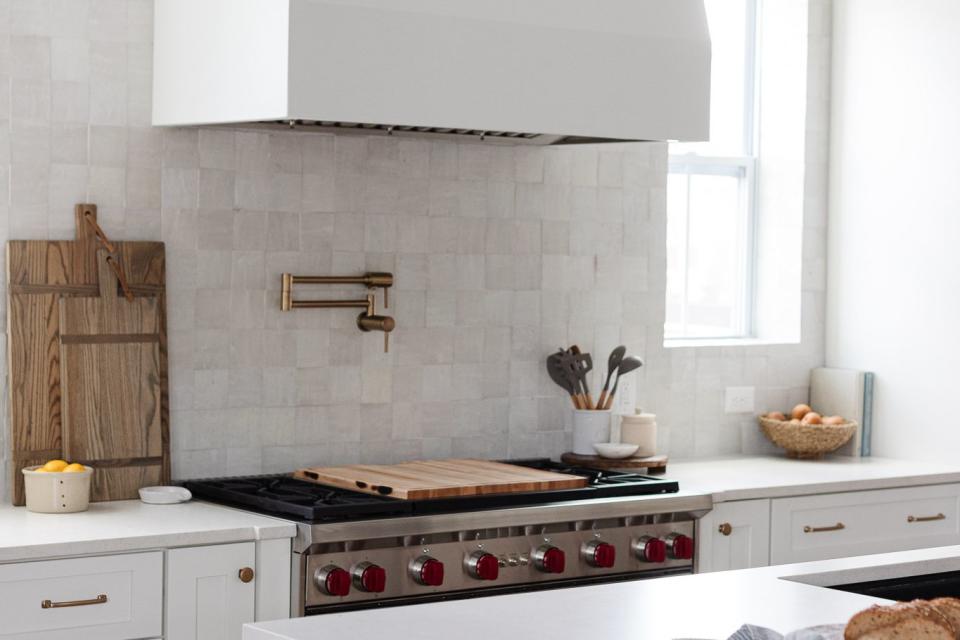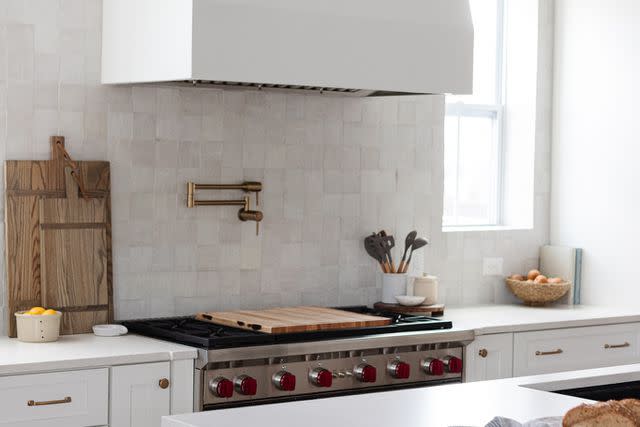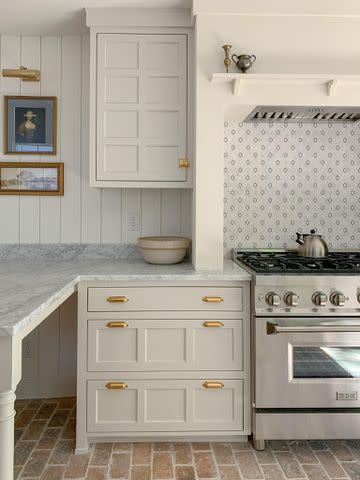7 Kitchen Backsplash Mistakes To Avoid At All Costs
Don’t let these blunders ruin your backsplash.

@wycdesigns_
There are so many pieces of the puzzle to a dazzling kitchen design. You need to get your cabinets in order, countertops accounted for, appliances ready to go, floors spoken for, et cetera, et cetera. We could keep going for days.
One element that can make or break the look and function of your kitchen is the backsplash. This durable bit of decor protects the wall beneath your cabinets from all the kitchen fanfare. A good backsplash needs to be water- and heat-resistant, easy to maintain, and, ideally, it should look good too. The backsplash can be a wonderful opportunity to show off some design chops and contribute to an overall beautiful kitchen.

@wycdesigns_
If you’re due for a new backsplash (or just dreaming of one), there’s quite a few decisions to make. First, you need to choose the main material, whether tiles, stone, glass, or otherwise. Do you want them plain? Imperfect? Patterned? It’s a big decision, especially because aesthetically, the backsplash can either blend into the rest of the decor or be a popping focal point of the room. Second, you need a grout to go with it. This is the stuff that will fill in the gaps between materials. Lastly, if you’re doing tiles or some kind of mosaic, you need to decide how to arrange the materials.
The sky’s the limit—or rather, the ceiling is—for your kitchen backsplash. However, there are just a few limitations that designers recommend enforcing. Here are the top mistakes that designers strongly suggest you avoid when it comes to your kitchen backsplash.
Mismatched Styles
As tempting as it may be, don’t simply choose your favorite stones or colors to throw onto your backsplash. Instead, consider the style and architecture of your kitchen and choose something cohesive to fit.
“Focus on the architecture of the home itself and also the style, especially of the cabinetry,” advises Laurie Champ, designer for Collected Living Design in Liberty, Missouri . “If your cabinetry is going to look really modern, then you need to pick something that is going to have cleaner lines. If your cabinetry is a little more traditional, then you want to pick something classic.”
Too Trendy
A backsplash isn’t the easiest or most affordable thing to change every time the wind blows so be sure to choose something that you can live with for a long time. For example, Jamie Lynn Gernert, founder of WYC Designs, is skeptical of one big backsplash trend taking kitchens by storm recently.
“Checkerboard backsplashes are really big right now, and it's one of those things that I hope the people who have it love it eight years from now. Be cognizant if you end up doing a pattern like this that might be not traditional for a backsplash but maybe more traditional as a flooring pattern,” she warns. “Trends can push for things and they're not always the best for everyone, so she's been mindful of those.”
Cement Tile
Cement tiles are a no-go for the kitchen backsplash (as is limestone, the chief component of cement) because it’s just too porous. A cement backsplash will absorb particles from the kitchen and become irreparably dirty much too quickly, making it a bad choice for cleanliness and longevity.
“I've done a project that really didn't go so smoothly where we did a cement tile that just really didn't work,” says Gernert. “It was constantly dirty and I will probably never do a tile backsplash ever again—Even if the client is really really into it.”

Collected Living Design
Mirrors/Glass
Highly reflective materials may not make the best backsplash, our designers advise. They’re difficult to keep clean because every spot and smudge is clear as day, plus they will unpleasantly reflect every light in the kitchen. According to Champ, a glass mosaic will suffer from these afflictions with the double whammy of making your kitchen also appear outdated.
"Glass and cement: That's what we steer clear of," sums up Abby Humphreys, also a designer with Collected Living Design who much prefers a marble backsplash.
Peel & Stick
Peel-and-Stick tiles are a hard “no” for all the designers interviewed because they lack longevity. They’re not a long-term solution, but rather Gernert will accept the use of Peel-and-Sticks for a quick fix or as a trial run to test out a color scheme before committing to an investment in quality tiles. Rather than getting too tile-happy and going to town on your own with these DIY tiles, be patient and hire a professional or learn how to properly install the real deal.
White Grout
Avoid white grout. Although it might seem like a clear choice, especially if you’re using white tiles, grout isn’t easy to clean and white grout is especially susceptible to discoloration.
“I never do a white grout. I usually do off-white, warm grays, or something that matches the tile because odds are you're going to be wiping it down to clean it, and you'll notice that white grout starts to change color a little bit,” says Gernert. “The darker you can go the better.”
“You don't want white grout in a kitchen where there'll be food splatter,” agrees Humphreys. “We like to find a nice medium, neutral tone that'll go with the tile. So if you have a white tile, we would do taupe grout.”
Stuck To The Status Quo
Linear, horizontal subway tiles are a popular choice, especially beloved by Humphreys and Champ, but they’re not the only one out there. Make simple tiles stand out by arranging them in an intriguing pattern. If you’re doing a pattern, Gernert recommends sticking with neutral colors or just one bold color, though. The result can still be neutral and classic, but will have a slight edge. A little herringbone or mosaic never hurt anybody.
For more Southern Living news, make sure to sign up for our newsletter!
Read the original article on Southern Living.

